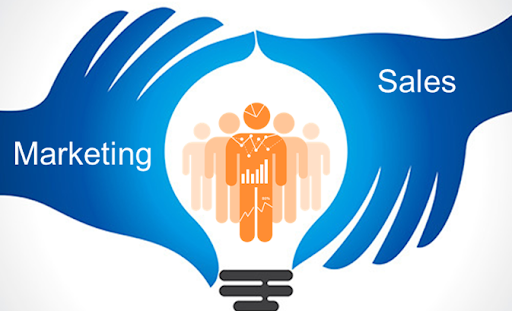I’m predicting that revenue-based marketing, the fear of every lead-focused marketer, will be the next prevalent trend as marketing and sales continue to merge in the world of digital communication.

Marketers (including myself) have spent the last 5 years perfecting lead generation strategies: lowering barriers to entry, too many landing pages, lead ads, and “gaming” the funnel. The result has become databases of contacts and low lead to customer rates.
Why the Shift from Lead Generation
1. Management has asked for leads: If marketing hits its lead numbers, the blame is on sales and we’re off to a happy weekend. This creates the wrong accountability and drives marketing to create strategies to acquire contacts, not build brand affinity and value.
2. Attribution at the customer level is extremely difficult, especially in b2b and enterprise software: In the world of multiple decision-makers, endless devices, and abundant information, the individuals or groups that generate enough brand affinity and product understanding to become paying customers have typically had dozens (if not hundreds) of touchpoints. Most marketers are still held accountable to first or last touchpoints.
3. Acquisition is difficult: Acquiring customers is very difficult, takes a lot of education, collaboration with sales, and requires a thick skin to deal with the realities that the sales cycle/buyer journey is longer than anticipated.
4. Marketing and sales are separated: Marketing and sales, despite having the same objective, are often kept separate. While the sales+marketing feedback loop is commonly preached, it’s rarely practiced.
Marketing vs. Sales Becomes “Marketing + Sales”
Marketing and sales roles are getting closer and closer in today’s digital transformation. Companies continue to shift to inbound marketing and inside sales strategies. Roles such as BDR (business development representative) and SDR (sales development representative) are now common in many organizations. Marketing has become less about empowering sales with tangible collateral, and more about working together to define the touchpoints, tackle real customer pain points and collaborate on tactics that help educate, build affinity, and guide individuals through the buying process.
Organizations need to do a better job of allowing marketing and sales to collaborate, set individual goals and indicators, but ultimately measure success and performance with revenue and business growth. This will create a win-win for all stakeholders… including your customers.

Revenue Marketing Creates Better Prospect Experience and More Revenue
When you shift your focus away from leads and focus on customers you begin to see the importance of product education, stakeholder engagement, and brand affinity as the real drivers of revenue. Marketers can and should begin to transition from conversion gimmicks and “Funnel Optimization” and rather focus on the areas that create value, solutions, and ultimately customers.
So, What Now?
Don’t worry, key marketing tactics (e.g., quality landing pages) still matter. The point is that marketing needs to reach beyond just converting traffic at high rates and work to better understand the real reason people buy. People need to be empowered by your unique solution. Marketing can’t just stop when the lead enters the CRM.
At OM, our focus is solution-based marketing where we report and target revenue KPIs over leads. We believe that marketers need to be held accountable for revenue growth. This ultimately leads to a better customer-focused approach and a clearer view of what it means to be a high-performing marketer.


